
- Homepage
- Brand
- Certification
- Function
- Gross Weight
- Output Power
- Size
- 1 Count (pack Of 1) (3)
- 160*70 Cm (2)
- 1600*700 Mm (3)
- 1600*700mm (3)
- 1600x700 Mm (2)
- 22.6*5.5 (3)
- 23*7*5cm / 9*2.8*2in (2)
- 25 19 17 In 53 Lb (21)
- 29.8*21.5*8cm (3)
- 29.9*5.2 In (7)
- 345*355*225mm (18)
- 40\ (2)
- 450*210*55mm (16)
- 63''×27'' (4)
- 72*33in (5)
- 8.46*2.36*1.97in (20)
- As Picture Show (5)
- Large (3)
- Medium (3)
- One Size (2)
- Other (1710)
ZJKC Powerful 808+650nm Cold Laser Therapy Device for Arthritis Wound Treatment
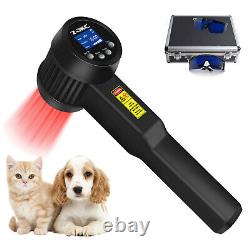
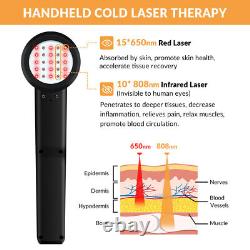
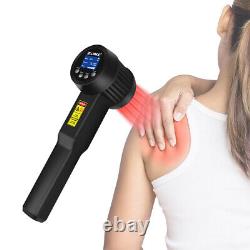
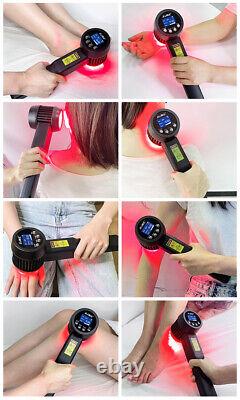

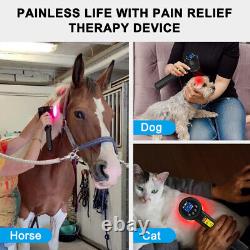
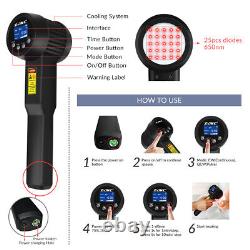
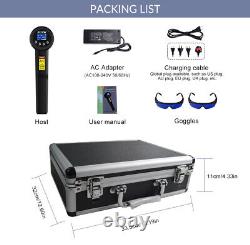


Welcom to ZJKC Official Store! Hen you have a chronic or acute health condition, you may be tired of living with pain, discomfort, or limited mobility, but you're not ready to commit to surgery or long-term prescription medications. Fortunately, you have other options, including cold laser therapy.
This technology allows you to tap into your body's healing power to relieve your pain naturally! What is Cold Laser Therapy? "Cold" lasers are called such because they employ low-level infrared and near-infrared light. At these wavelengths, lasers trigger your cells and promote accelerated healing without damaging your soft tissues. Another name for this therapy is low-level laser therapy (LLLT). Each safe, painless, and non-invasive treatment only takes a few minutes to complete, though you may need several sessions to achieve the desired results. How Do Cold Lasers Help You Heal? A qualified practitioner applies a handheld device to the treatment area and emits laser energy into your skin. Wavelengths between 600 and 700 nanometers (nm) treat tissue near the surface, while wavelengths of 780 to 950 nm penetrate muscles and other tissues deeper down.During treatment, you'll feel the device against your skin, but you'll detect no sound, vibration, heat, or pain. Cold laser energy helps your body repair and rebuild from the inside out. It blocks nerve transmissions for instant pain relief. It stimulates the production of adenosine triphosphate, boosting your cells'detoxification and regenerative abilities. It initiates a chemical reaction that prompts your cells to increase their production of tissue-building collagen and elastin.
The accelerated growth of healthy new tissue raises the number of blood vessels in the area, promoting better circulation and delivering oxygen and nutrients where they're needed most. What Does Cold Laser Therapy Treat? Depending on your symptoms and the underlying cause of your pain, LLLT may be used in multiple places during a single session. Cold lasers are incredibly versatile and may be used to treat pain stemming from muscles, connective tissues, trigger points, nerves, lymph nodes, and more.
Cold laser treatment may be worth trying if you struggle to manage any of the following conditions. Aches and Pains, Arthritis, Knee Pain, Back Pain, Neck Pain, Osteoarthritis, Rheumatoid Arthritis, Joint Pain, Fibromyalgia, Acute and Chronic Pain, Inflammation, Carpal Tunnel Syndrome, Swell Soft Tissue Injuries, Wounds, Swell, Muscle/Ligament Strain, Tendonitis, Tennis Elbow, Sciatica, Neuropathic Pain, Burns. Continuous Mode & Pulsed Mode, Adjustable. 25% 50% 75% 100%, Adjustable. AC85V-265V, 50/60Hz or DC12V (20400mAh).Laser therapy is a non-invasive medical treatment that uses light of a specific wavelength to treat multiple diseases. It's scientifically proven to be effective and have been widely used by.
What does laser therapy feel like? Laser therapy treatments must be administered directly to skin, as laser light cannot penetrate through layers of clothing. You will feel a soothing warmth as the therapy is administered.
Many patients receiving therapy laser treatments report enjoying the experience. Patients receiving treatments with higher-power lasers also frequently report a rapid decrease in pain. For someone suffering from chronic pain, this effect can be particularly pronounced. Laser therapy for pain can be a viable treatment.
Class IV laser therapy (now called photobiomodulation) devices are safe and efficacious reduction of pain and increasing micro-circulation. Therapy lasers are safe and effective treatment options to reduce musculoskeletal pain due to injury. The biggest risk to injury during laser therapy treatments is to the eye, which is why certified, protective eyewear is always required during laser treatments. How long does a therapy session last? With lasers, treatments are quick usually 3-10 minutes depending on the size, depth, and acuteness of the condition being treated.High-power lasers are able to deliver a lot of energy in a small amount of time, allowing therapeutic dosages to be achieved quickly. For patients and clinicians with packed schedules, fast and effective treatments are a must. How often will I need to get treated with laser therapy?
Most clinicians will encourage their patients to receive 2-3 treatments per week as the therapy is initiated. There is a well-documented support that the benefits of laser therapy are cumulative, suggesting that plans for incorporating laser as part of a patient's plan of care should involve early, frequent treatments that may be administered less frequently as the symptoms resolve. How many treatment sessions will I need? The nature of the condition and the patient's response to the treatments will play a key role in determining how many treatments will be needed. Most laser therapy plans of care will involve 6-12 treatments, with more treatment needed for longer standing, chronic conditions. Your doctor will develop a treatment plan that is optimal for your condition. How long will it take until I notice a difference? Patients often report improved sensation, including a therapeutic warmth and some analgesia immediately after the treatment.For noticeable changes in symptoms and condition, patients should undergo a series of treatments as the benefits of laser therapy from one treatment to the next are cumulative.

